Hike Idea Near Tokyo: Mt. Nokogiri
Challenge Your Fear Of Heights In Chiba Prefecture
Mt. Nokogiri, or “mount sawtooth,” in Chiba prefecture is an easy one-hour trip away from the hustle and bustle of downtown Tokyo. It's the perfect destination for anyone who wants a breath of fresh air far away from bustling Tokyo.
When Tokyo is just too much, Mt. Nokogiri is your ticket for evasion! This hike is easily accessible by train from Tokyo and offers expansive views to the Miura Peninsula and across Tokyo Bay, the perfect outing before the summer heat hits us. But be warned, its wooded beauty and steep pathways are not for the fainthearted.
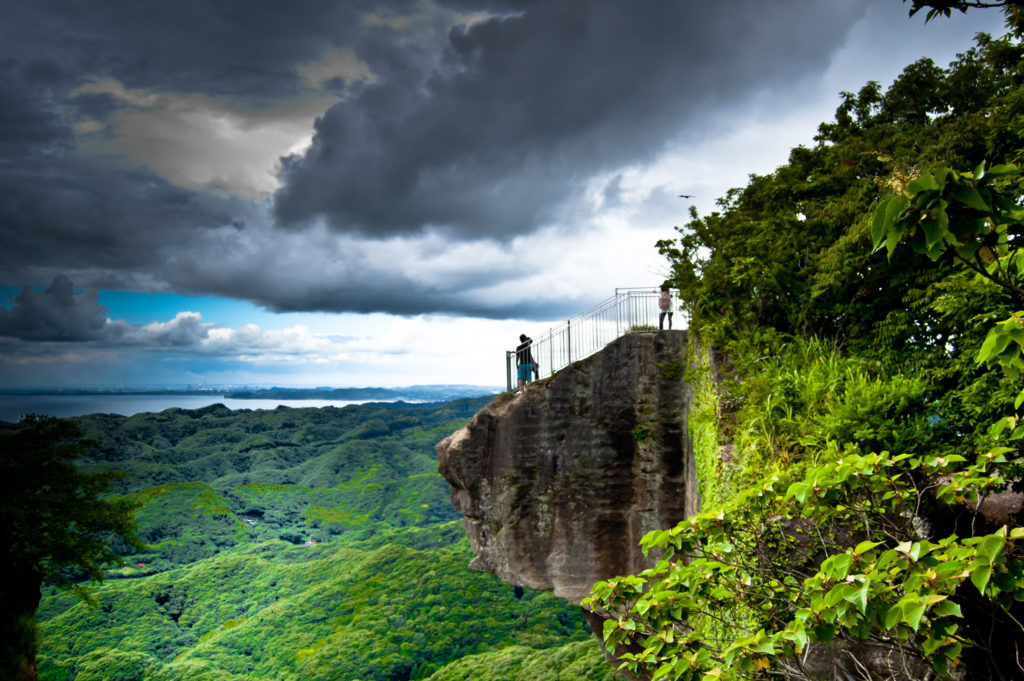
A peek into hell
Hike at your own pace
The mountain has an elevation of 329.5 meters but allows you to choose between 2 trails of 1h30 that takes you to the top or taking a ropeway halfway up. The hikes can be pretty intense, so it might be a good idea to choose the ropeway when going with your kids! When reaching the top by ropeway, there is still some hiking to do but way less difficult and with, of course, breathtaking views.
Our family elected to take the ropeway halfway up and this was a good call, as the path immediately takes a steep and, at times, muddy rise. A free map is available at the ropeway station, and following it leads to a trail along with the ragged-tooth profile of the mountain. The trail is constructed mostly of concrete steps. With little consistency in size or shape, these steps make the going hard, but the rewards are great.
Buddhas as hiking companions
After the first 15 minutes of climbing, a narrow canyon opens up, its sides flanked by centuries-old statues of Buddha carved into the rocks or set on plinths of mossy, giant pavers. Vine tendrils and ancient palms give it the feeling of a lost world. It’s cool, calm and inviting.
Still, more concrete steps bring into view a platform suspended from a rocky outcrop.
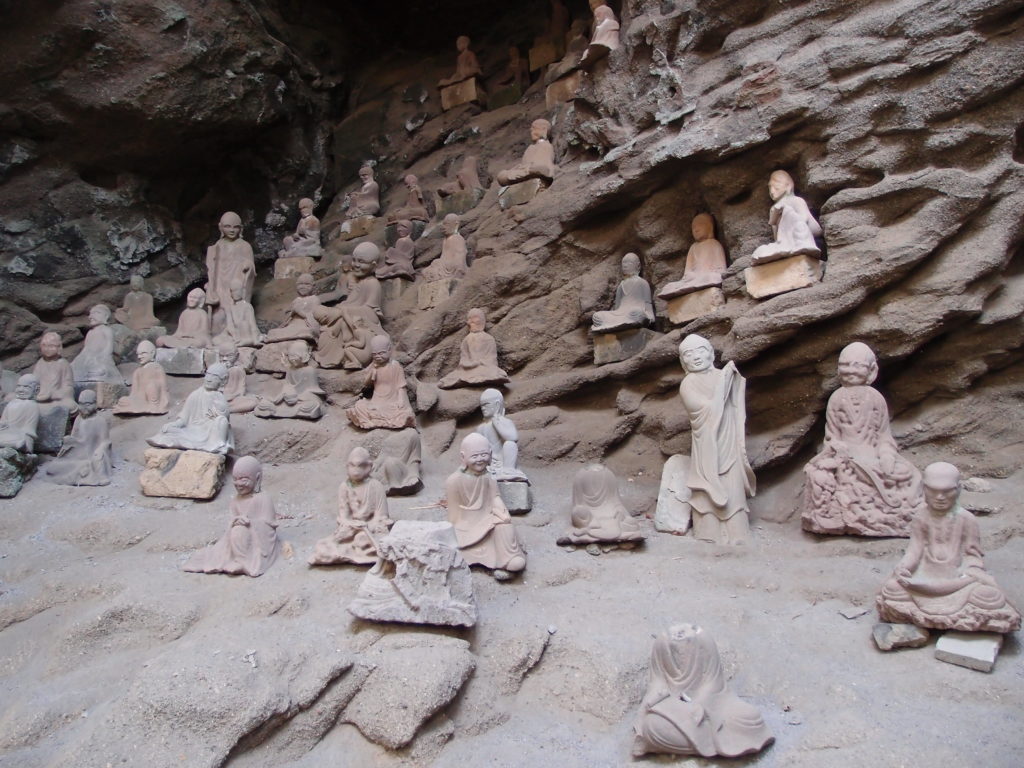 © Photo by Guilhem Vellut
© Photo by Guilhem Vellut
Ahead, a long line of hikers is getting their “I’m the king of the world” moment by hanging over a safety rail, into the void, the wind racing up into their faces. Our map identifies the outlook as “View of Hell.” Being a little disturbed by this and slightly agoraphobic, we forgot the pleasure and start the descent down the other side of the mountain.
Vine tendrils and ancient palms give it the feeling of a lost world
It had rained recently and the muddy slopes and steps required a more dedicated focus, so much so in fact that we were suddenly surprised to find ourselves surrounded by stone statues of all sizes, some hidden in the natural rock grottos, others perched high on rock ledges. These are the arhats of Mt. Nokogiri, over 1,500 stone representations of Buddhist monks and priests. Each has a unique face and expression. A hiker who had shared our slippery descent explained that the longer the statue’s earlobes, the closer to enlightenment they were. Some arhats, it seemed, had a long way to go.
The biggest stone-carved Buddha in Japan
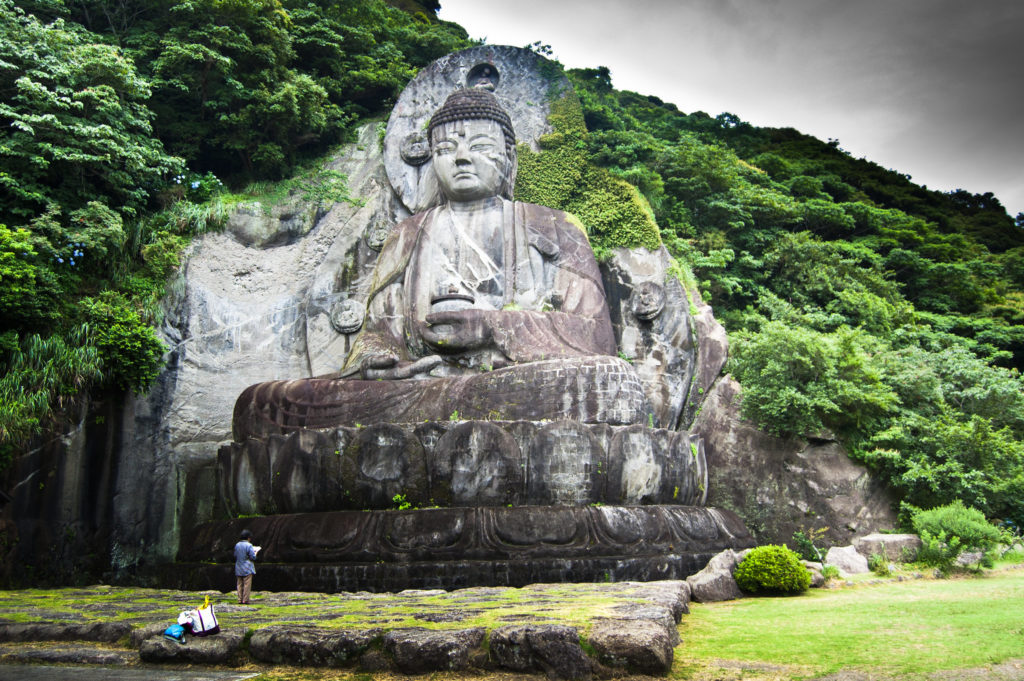 © Photo by Ikusuki
© Photo by Ikusuki
The far side of the mountain is home to the largest pre-modern stone figure of Buddha in Japan. The Daibutsu of Nihon-ji looks away from the mountain, serenely overseeing the gardens and a small but elegant shrine belonging to the Imperial family. Here playful stone foxes guard the shrine and stone lanterns mark the path to the exit and a return to daily life.
Experienced hikers say that the hike across the mountain is an easy one, but being neither experienced or hikers we found all those steps a bit of a challenge. However, the wonderful views and delightful arhats certainly make up for any discomfort.
The Deets
When to go: The Mt. Nokogiri climbing seasons are
- Winter, 9 a.m. to 4 p.m from Nov. 16 to Feb. 15;
- Spring, 9 a.m. to 5 p.m. Feb. 16 to Apr. 15;
- During Summer, the climbing hours are extended to 9 a.m.to 6 p.m.
Getting there: JR express trains called Sazanami run between Tokyo station and Hamakamaya station, with the journey taking 1.5 hours. Those with a car can drive via the Aqualine freeway from Tokyo in about one hour. In addition, highspeed buses leave from Tokyo and Shinjuku stations and connect with JR trains at Kisarazu station. The journey takes about one hour and 40 minutes.

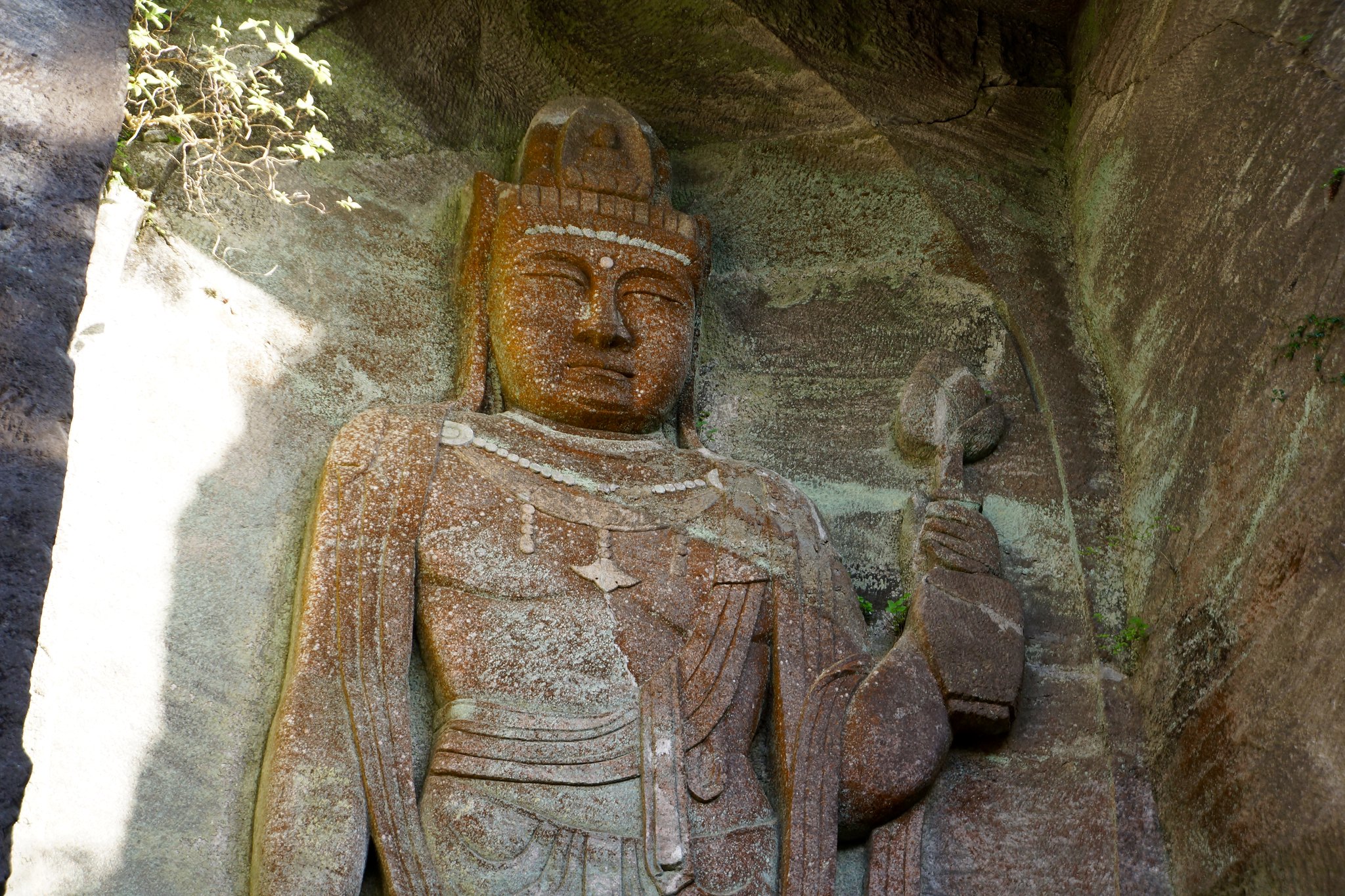











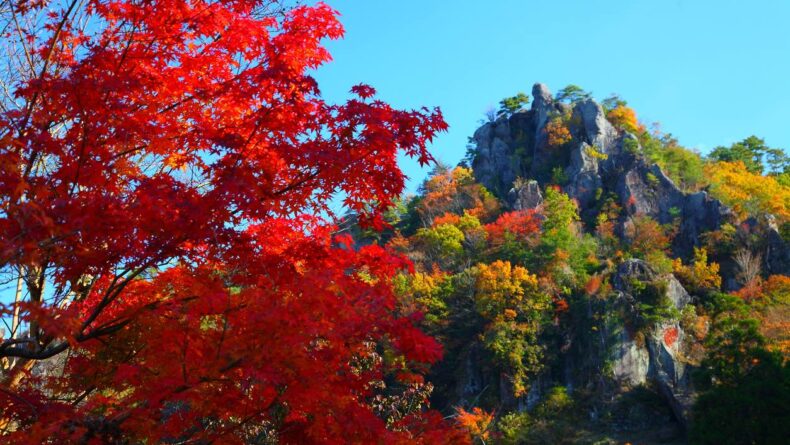

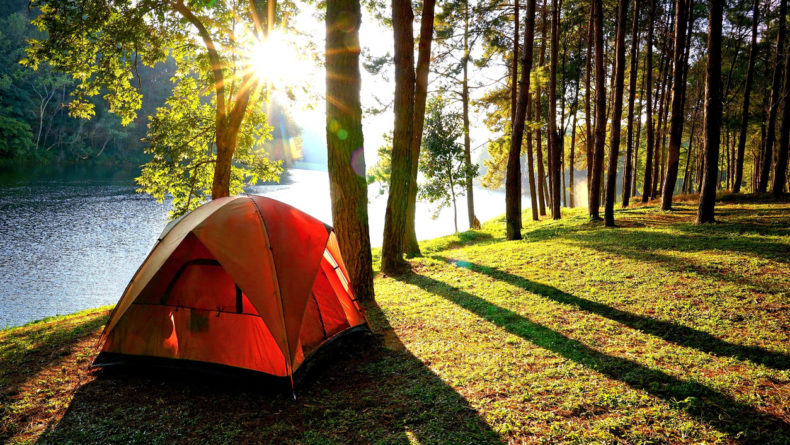
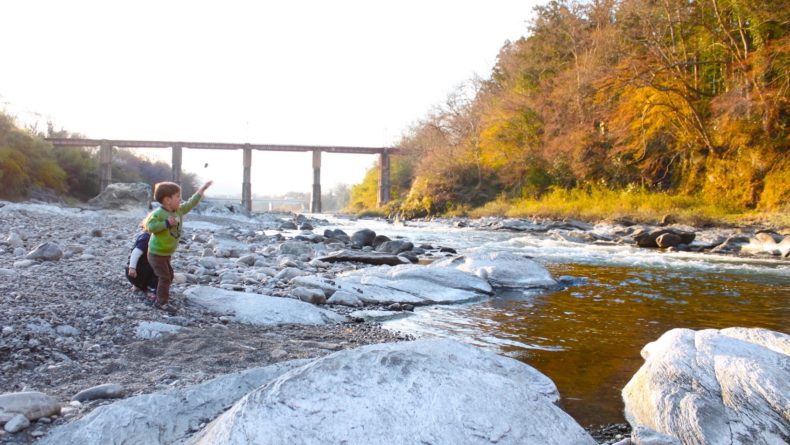
Leave a Reply